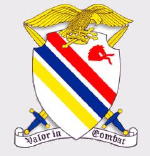Hobby Master HA8411 USAAF Republic P-47D Thunderbolt Fighter - Major Glenn Eagleston, 353rd Fighter Squadron "Pioneers", 354th Fighter Group, France, 1944 (1:48 Scale)
"Why should we have a navy at all? There are no enemies for it to fight except apparently the Army Air Force."
- General Carl Spaatz, Commander of the US 8th Army Air Force, after WWII
 Nicknamed the "Jug" for its bulky shape, the Republic P-47 Thunderbolt was considered a monster of a machine. Despite its size, the Thunderbolt proved to be a fast and maneuverable warbird able to hold its own in combat. In fact, when Allied pilots climbed aboard a P-47, they knew the were in control of a fighting machine with enormous power. More importantly, they knew that if their aircraft was hit but gunfire, they had an excellent chance of making it home.
Nicknamed the "Jug" for its bulky shape, the Republic P-47 Thunderbolt was considered a monster of a machine. Despite its size, the Thunderbolt proved to be a fast and maneuverable warbird able to hold its own in combat. In fact, when Allied pilots climbed aboard a P-47, they knew the were in control of a fighting machine with enormous power. More importantly, they knew that if their aircraft was hit but gunfire, they had an excellent chance of making it home.
Refinements to the Thunderbolt continued throughout its career, leading to the P-47D, which was the most produced version with 12,558 built. The "D" model actually consisted of a series of evolving production blocks, the last of which were visibly different from the first.
The first P-47Ds were actually the same as P-47Cs. Republic could not produce Thunderbolts fast enough at its Farmingdale plant on Long Island, so a new plant was built at Evansville, Indiana. The Evansville plant first built a total of 110 P-47D-1-RAs, which were completely identical to P-47C-2s. Farmingdale aircraft were identified by the -RE suffix after the block number, while Evansville aircraft were given the -RA suffix.
The P-47D-1 through P-47D-6, the P-47D-10, and the P-47D-11 successively incorporated changes such as the addition of more engine cooling flaps around the back of the cowl to reduce the engine overheating problems that had been seen in the field. Engines and engine subsystems saw refinement, (the P-47D-10 introduced the R-2800-63, replacing the R-2800-21 seen in previous P-47s) as did the fuel, oil and hydraulic systems. Additional armor protection was also added for the pilot.
The P-47D-15 was produced in response to requests by combat units for increased range. "Wet" (equipped with fuel plumbing) underwing pylons were introduced to allow a bomb or drop tank pressurized by vented exhaust air to be carried under each wing, in addition to the belly tank.
Pictured here is a 1:48 scale replica of a P-47D that was piloted by Major Glenn Eagleston, who was attached to the 353rd Fighter Squadron "Pioneers", 354th Fighter Group, then deployed to France during 1944.
Sold Out!
Dimensions:
Wingspan: 10-inches
Length: 8-3/4-inches
Release Date: April 2017
 Historical Account: "Valor in Combat" - The 354th Fighter Group, dubbed "Pioneers," started flying P-51B's over France in December 1943. Originally part of the Ninth Air Force, the 354th was loaned to the Eighth for bomber escort duty. They received their Merlin-powered P-51B's in November, along with the formidable Don Blakeslee as a temporary CO. Blakeslee led the 354th on several missions and drove the pilots hard; he insisted that they engage the German fighters and maintain a collision course, in a deadly game of aerial "chicken," counting on the Germans to break off first. The 354th flew through the bad winter weather of 1943-44, typically dividing its three squadrons into four color-coded flights of four planes each.
Historical Account: "Valor in Combat" - The 354th Fighter Group, dubbed "Pioneers," started flying P-51B's over France in December 1943. Originally part of the Ninth Air Force, the 354th was loaned to the Eighth for bomber escort duty. They received their Merlin-powered P-51B's in November, along with the formidable Don Blakeslee as a temporary CO. Blakeslee led the 354th on several missions and drove the pilots hard; he insisted that they engage the German fighters and maintain a collision course, in a deadly game of aerial "chicken," counting on the Germans to break off first. The 354th flew through the bad winter weather of 1943-44, typically dividing its three squadrons into four color-coded flights of four planes each.
Among the outstanding pilots of the 354th that winter were Glenn Eagleston and Jim Howard. On January 5th, 1944, the 354th was covering bomber withdrawal from Kiel when they engaged a gaggle of Luftwaffe fighters. Flying at 23,000 feet, Eagleston caught an Fw 190 with a short burst, at 45 degrees of deflection. The Fw dove away steeply and Eagleston pursued. Both planes accelerated rapidly; the the German went into a violent, unrecoverable spin. Crashing into the ground, the Focke Wulf became Eagleston's first victory - which he might not even have hit with his machine gun fire. On the Kiel mission of Jan. 5th, the Group claimed 18 enemy aircraft.





 P-47D Thunderbolt Fighter
P-47D Thunderbolt Fighter 


